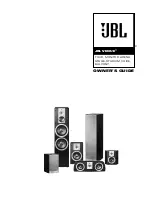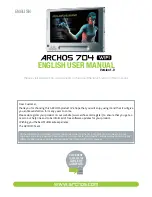
60708-141
Page 7
7270-00
Notice the preceding tables give two (2) different units of measur-
ing fuel pressure. The first is with a pressure gauge calibrated in
ounces per square inch. The second and most accurate is the
use of a simple water manometer. A manometer is calibrated in
inches of water column.
LP LIQUID WITHDRAWAL SYSTEMS
When installing a unit equipped the LP liquid withdrawal a
primary regulator is not required on the supply tank. The supply
line is connected to a liquid withdrawal valve on the supply tank
and runs directly to the fuellock strainer mounted on the engine
generator set. Normally a 3/8 inch copper line is acceptable for
this type of fuel installation. You must be sure that the valve you
have connected to on the supply tank is in fact a liquid supply
valve and has a drop tube inside the tank that is pulling fuel from
the bottom of the supply tank. Before starting the unit you must
confirm that you have a good liquid supply at the unit. Engine
generator sets equipped for liquid withdrawal will not run
properly when supplied with high pressure vapor fuel.
LUBRICATION
Before starting the engine, check the oil level in the crankcase. If
it is low, refill to the full mark with the proper weight/grade of oil as
recommended by the engine manufacturer’s maintenance
instructions. The necessity of using the correct oil, and keeping
the crankcase full cannot be over emphasized. Failure to use the
proper oil and keep the crankcase properly filled will cause
excessive engine wear and shorten its useful life.
COOLANT
Before starting the engine, check the coolant level in radiator. If it
is low, refill as specified in the engine manufacturer’s mainte-
nance instructions. The radiator should be filled to about 1 inch
below the filler neck. For additional information on engine coolant
requirements see engine manufacturer’s maintenance instruc-
tions.
INSTALLING THE BATTERY
**** CAUTION ****
In the following battery installation procedure, check to be sure
the selector switch remains in the “stop” position. This should be
your last step before initial start-up.
A customer supplied twelve-volt battery is required to complete
the installation. Installation of the highest CCA rated battery,
within the correct BCI group, will increase cold weather starting
performance. Gel batteries should not be used with the battery
tender installed in the generator enclosure.
MINIMUM
Model
Voltage
BCI Group CCA Rating
GR27G4
12
24
650
GR40G4
12
24
650
Installation and servicing of batteries must be performed or
supervised only by personnel knowledgeable of batteries and the
required precautions. Keep unauthorized personnel away from
batteries.
When installing or replacing batteries, use the proper group/size
starting battery. The battery should be a Maintenance Free lead
acid design. Deep cycle batteries will not work for this applica-
tion.
CAUTION – PERSONAL DANGER
CAUTION - NEVER dispose of a battery in a fire. The battery is
capable of exploding.
CAUTION - DO NOT open or mutilate the battery. Released
electrolyte is known to be harmful to the skin and eyes and to be
very toxic.
These engine generator sets are all NEGATIVE ground. Be very
careful not to connect the battery in reverse polarity, as this may
short circuit the battery charging system on the engine.
CAUTION – A battery presents a risk of electrical shock and high
short circuit current. The following precautions must be observed
when working with batteries.
1.
Remove watches, rings and other metal objects.
2.
Use tools with insulated handles.
3.
Check both the battery cable ends and the battery posts to be
sure they are free of corrosion.
4.
Always connect the battery positive cable first and then
connect the battery negative cable. When removing the battery
cables from the battery reverse the procedure, disconnect the
negative cable first and then the positive cable.
5.
Be sure all connections are tight and coat the terminals and
cable end with dialectic grease.
WARNING – The electrolyte is a diluted sulfuric acid that is
harmful to the skin and eyes. It is electrically conductive and
corrosive. The following precautions must always be taken.
*
Always wear full eye protection and protective clothing
*
Where electrolyte contacts the skin, wash off immediately
with water.
*
If electrolyte contacts the eyes, flush thoroughly and immedi-
ately with water and seek immediate medical attention.
*
Spilled electrolyte is to be washed down with an acid neutral-
izing agent. A common practice is to use a solution of one pound
of bicarbonate of soda (baking soda) to one gallon of water. The
bicarbonate of soda solution is to be added until the evidence of
reaction, foaming, has ceased. The resulting liquid is to be
flushed with water and the area dried.
DANGER – Explosive Fire Risk
*
Never smoke when near batteries
*
Do not cause a flame or spark in the battery area
*
Always discharge static electricity from your body before
touching batteries by first touching a grounded metal surface.
SERVICING BATTERIES
Batteries used on these units may over time lose water. This is
especially true if you are using a trickle charger to maintain your
battery. When refilling the battery with water use only distilled
water. Tap water will shorten the service life of the battery.
Summary of Contents for Winpower GR27G4 B Series
Page 18: ...Page 16 7270 00 60708 141 ...






































